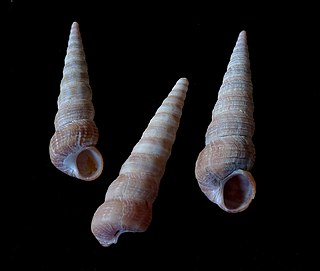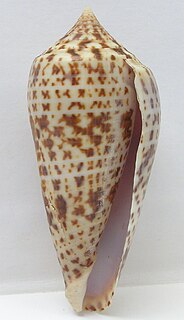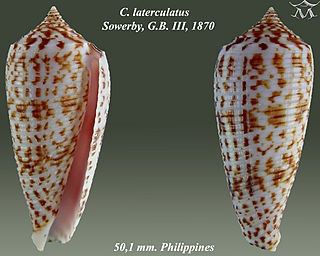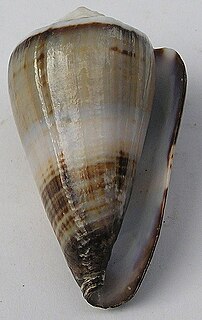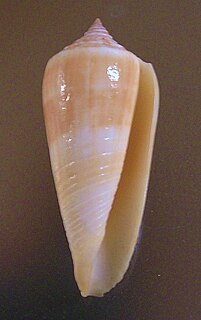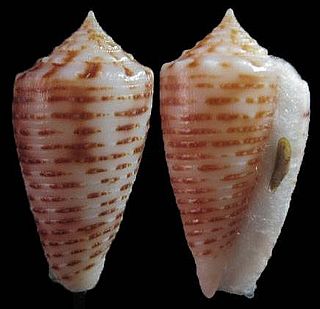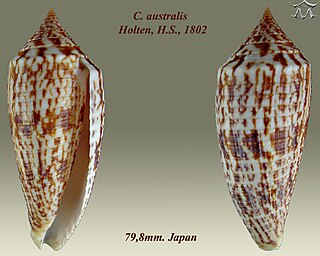| Conus aristophanes | |
|---|---|
 | |
| Shell of Conus aristophanes (museum specimen at MNHN, Paris) | |
| Scientific classification | |
| Kingdom: | Animalia |
| Phylum: | Mollusca |
| Class: | Gastropoda |
| Clade: | Caenogastropoda |
| Clade: | Hypsogastropoda |
| Clade: | Neogastropoda |
| Superfamily: | Conoidea |
| Family: | Conidae |
| Genus: | Conus |
| Species: | C. aristophanes |
| Binomial name | |
| Conus aristophanes G. B. Sowerby II, 1857 | |
| Synonyms [1] | |
| |
Conus aristophanes is a species of sea snail, a marine gastropod mollusk in the family Conidae, the cone snails and their allies. [1]

Sea snail is a common name for snails that normally live in salt water, in other words marine gastropods. The taxonomic class Gastropoda also includes snails that live in other habitats, such as land snails and freshwater snails. Many species of sea snails are edible and exploited as food sources by humans.
Family is one of the eight major hierarchical taxonomic ranks in Linnaean taxonomy; it is classified between order and genus. A family may be divided into subfamilies, which are intermediate ranks between the ranks of family and genus. The official family names are Latin in origin; however, popular names are often used: for example, walnut trees and hickory trees belong to the family Juglandaceae, but that family is commonly referred to as being the "walnut family".

Conidae, with the current common name of "cone snails," is a taxonomic family of predatory sea snails, marine gastropod molluscs in the superfamily Conoidea.
Contents
These snails are predatory and venomous. They are capable of "stinging" humans, therefore live ones should be handled carefully or not at all.

